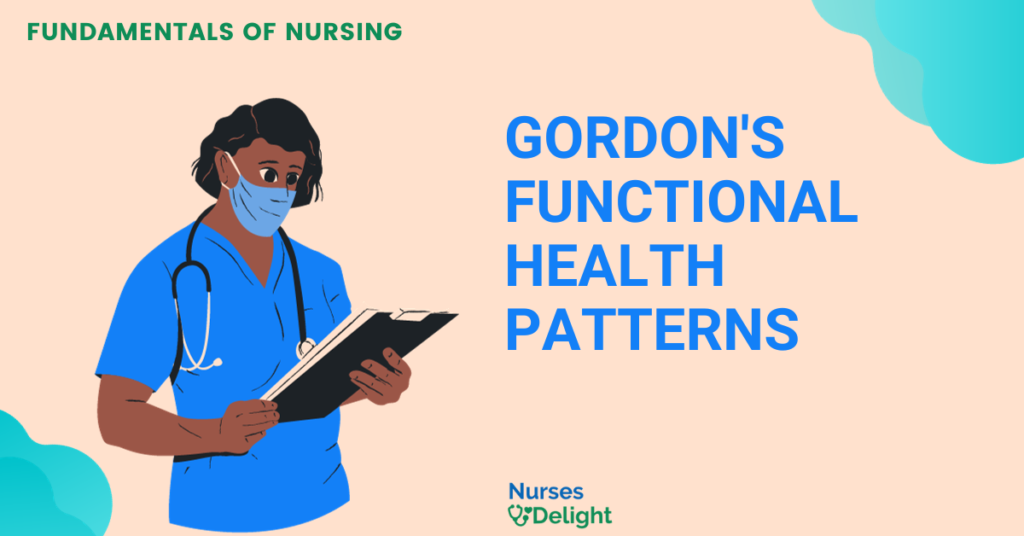In 1987, Marjory Gordon developed the 11 set of Gordon’s Functional Health Patterns to be used in the Nursing Process by nurses to ensure that a more comprehensive nursing assessment is done of the patients.
In each pattern, nurses ask questions to obtain more details that perhaps the patient may not have provided during the initial assessment and/or issues that may have developed during the course of nursing care.
The health patterns include;
1. Health Perception-Health Management Pattern
This pattern describes how a patient views and understands their health and how they take measures to manage their health. It takes note of healthy and unhealthy practices.
By asking questions related to this pattern, the nurse can identify factors that promote patients’ health such as health-seeking behaviors, and those that are detrimental to their health such as smoking, drinking, and substance abuse.
2. Nutrition and Metabolic Pattern
This pattern describes the food and fluid intake relative to metabolic needs. Nurses can use this pattern to understand the patients’ nutrient supply, fluid balance, the tissue integrity, and immunity.
3. Elimination Health Pattern
Elimination refers to how the waste products are removed from the body through excretion mechanisms of the bowel, bladder, and skin. This pattern elaborates the excretory function of the body and can be used to assess excretion abnormalities such as urinary incontinence, urinary retention, polyuria, dysuria, constipation, diarrhea, and diaphoresis.
4. Activity-Exercise Pattern
This pattern will help the nurse to understand if the patients can perform daily activities such as hygiene, walking, and eating without a problem. A nurse will also be able to understand the systems involved in the activities such as cardiovascular, respiratory, and musculoskeletal.
5. Cognitive–Perceptual Pattern
This pattern assesses the patients’ neurological functions and comprehension abilities such as orientation to person, time, and place, and ability to follow commands.
6. Sleep-Rest Health Pattern
Sleep and rest are vital when it comes to health. However, some patients may have abnormal sleeping patterns such as hypersomnia or insomnia. The sleep-rest pattern enables a nurse to detect these abnormalities.
7. Self-Perception – Self-Concept
The nurse assesses the patients’ attitudes to self, self-identity, and self-worth. It rotates on how patients view themselves by asking the patient questions about their body image, comfrey and self-esteem, and feeling.
8. Role Relationship Health Pattern
This pattern explores the patients’ ability to know their role in the world. Are they satisfied with their role? And are they functional or dysfunctional? Do they have personalities that hinder their relationships and engagements with others?
9. Sexuality Reproductive
The questions asked here by the nurse are to determine the patients’ sexual satisfaction and/or dissatisfaction. Are they satisfied with their sexual orientation? And what is their sex appetite?
10. Coping-Stress Tolerance
To cope is to deal effectively with a difficult situation. This pattern attempts to describe how the patient deals with stressful situations and the effectiveness of his or her strategies.
11. Value Belief Pattern
Values and beliefs are ideologies that are highly esteemed by a person. For patients, values and beliefs can affect their choices or decisions.



